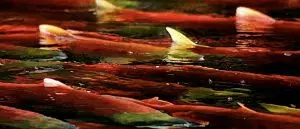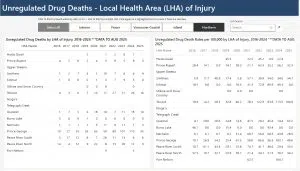 New UBC research has found that female adult sockeye from the Fraser River are dying at a significantly higher rate than their male counterparts on the journey back to their spawning grounds. Lead researcher Dr. Scott Hinch, a professor in the faculty of forestry and head of the Pacific Salmon Ecology and Conservation Laboratory at UBC says the research demonstrates that female salmon die at a much higher rate than male salmon.
New UBC research has found that female adult sockeye from the Fraser River are dying at a significantly higher rate than their male counterparts on the journey back to their spawning grounds. Lead researcher Dr. Scott Hinch, a professor in the faculty of forestry and head of the Pacific Salmon Ecology and Conservation Laboratory at UBC says the research demonstrates that female salmon die at a much higher rate than male salmon.
Hinch notes that records in the 1930s and even up to early 1990s show that for most years, females outnumbered males in spawning grounds. The sex ratios began to change in the early 2000s. The trend of higher female mortality was also identified in other Pacific salmon species including Coho and Chinook salmon, and in sockeye in other river systems. According to Hinch’s research the decline in salmon populations is not going to change.
Some recommendations being made to help with the issue include adjusting harvest rates to protect female salmon. As well as ensuring that migration routes have fewer obstacles to ensure females are able to complete their migration. However, one of the issues identified during research is the difficulty identifying sex when the fish is caught.
Photos provided by: UBC










Comments